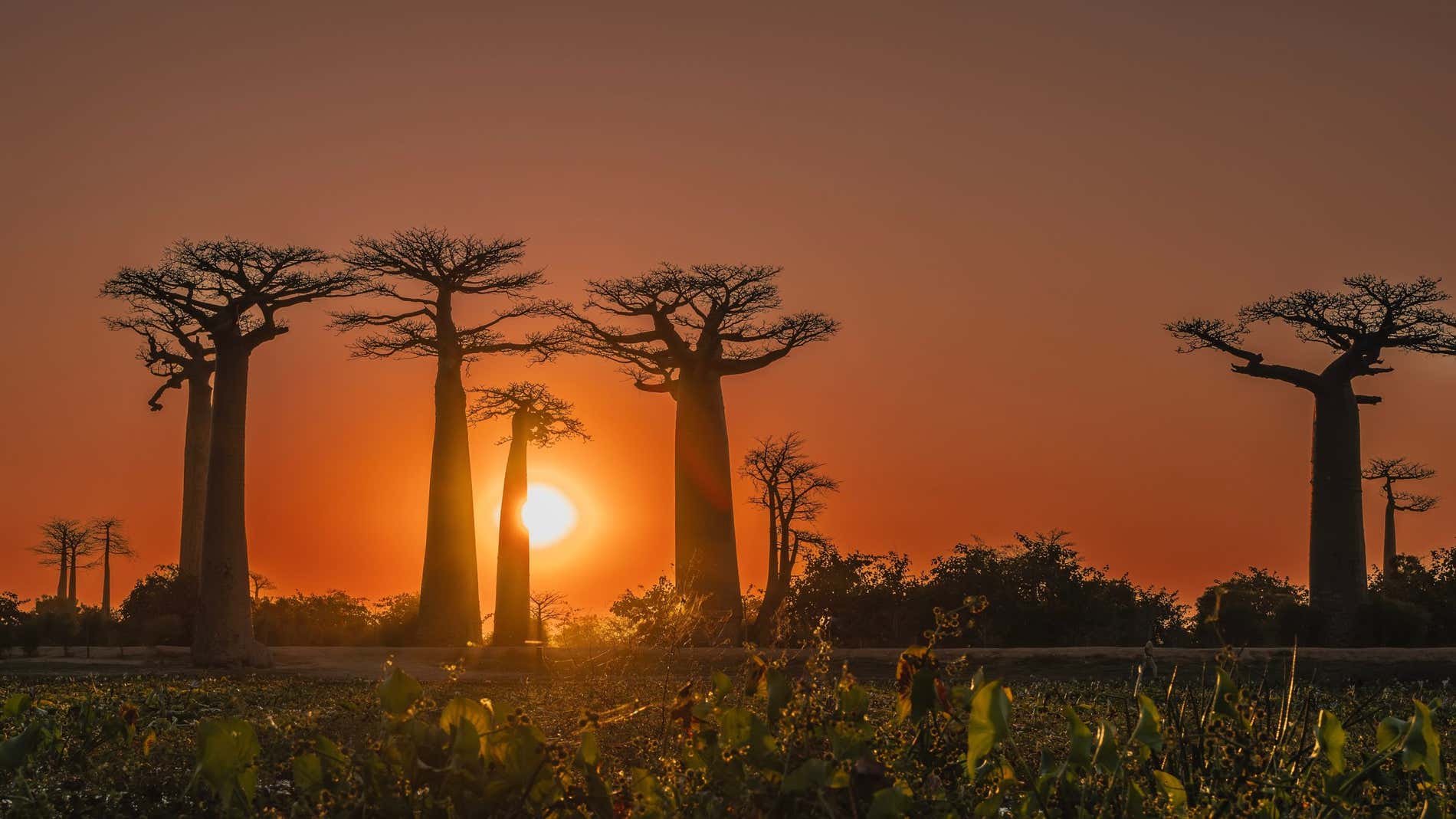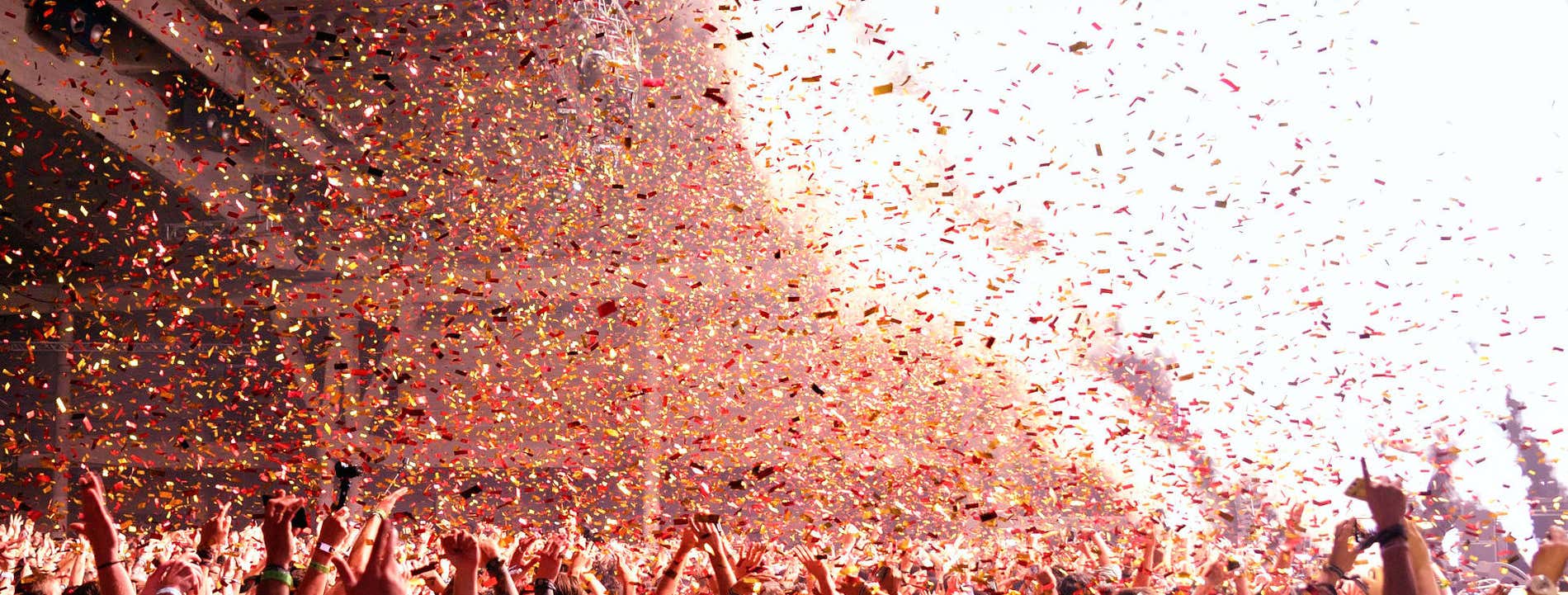The Spooky History of Halloween: Origins, Meaning & Traditions

From bedsheet ghosts to pin the tail on the donkey and bobbing for apples… Halloween is a global phenomenon that is celebrated differently all over the world. While Halloween as we know it today has been heavily influenced by the United States, its origins are much older than that. As such, today at Civitatis we’re running through the history of Halloween, its origins, history, and more—this is your comprehensive guide covering everything you need to know about this beloved holiday!
The History of Halloween
1. Halloween and the Celtic Tradition of Samhain
There are a number of theories about the true origins of Halloween. The name Halloween/Hallowe’en comes from All Hallow’s Eve, which refers to the evening before All Hallows’ Day—a Western Christian feast. However, like many Christian holidays/feasts, Halloween is thought to have more ancient, pagan roots.
The most widely accepted theory is that Halloween can be traced back to the Celtic festival of Samhain, which dates back over 2,000 years. This festival celebrates the end of the harvest season and the start of winter. Samhain would have been widely observed throughout Ireland as well as in Scotland and the Isle of Man. Similar festivals would likely have been celebrated in Wales, Cornwall, and Brittany in northern France, all of which are former Celtic lands.
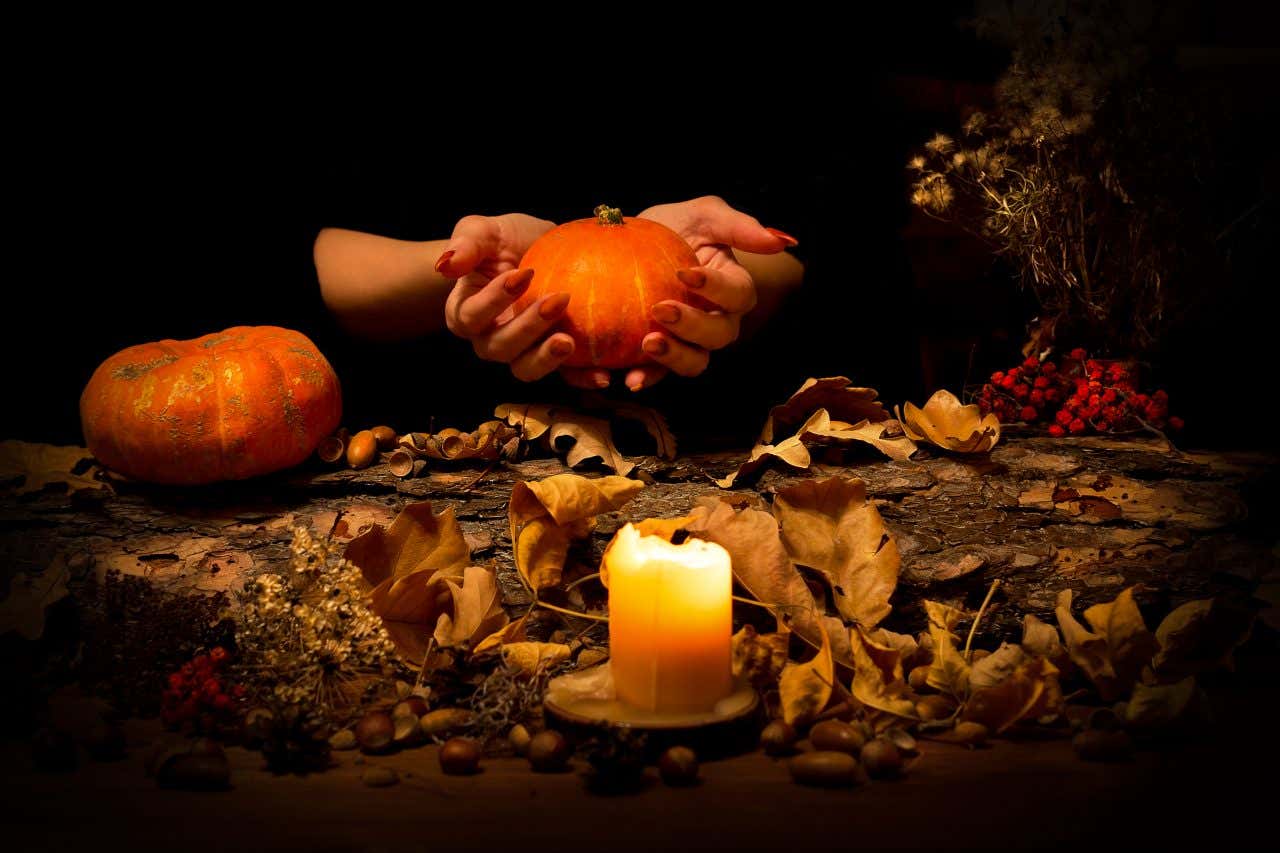
On the night of Samhain, it was thought that the boundary between the worlds of the living and the world of the dead blurred, and the dead would be able to return to the mortal world. As such, people would put on masks so that the dead would mistake them for fellow ghosts and leave them be. People would also leave food outside their homes in order to appease the ghosts and stop them from entering their homes. They would also light bonfires and candles to help spirits find their way. Clearly, many similarities can be drawn between these practices and modern iterations of Halloween, which often involve leaving candy outside of houses (trick-or-treating), wearing masks, and lighting fires.
If you’re visiting Ireland and want to learn more about this holiday and its Celtic history more generally, we highly recommend this Celtic Ireland tour from Dublin, which will bring you around a number of the country’s most sacred sites and give you a deeper insight into Celtic culture.
2. Ancient Rome, Feralia, Lemuria and Halloween
Samhain would have evolved due to Roman influence as well. The ancient Romans celebrated the dead as part of the festival of Feralia, which, like modern Halloween, was celebrated in late October. On this holiday, the Romans also celebrate the goddess of fruits and trees (Pomona), which is thought by some scholars to have contributed to the practice of bobbing for apples.
Lemuria is another Roman festival which has been linked to Halloween, taking place on the 9th, 11th, and 13th of May. During this festival, citizens would offer food outside their homes to ward off the spirits of dead people with whom they had feuded. It has been suggested that Lemuria derives from ‘Remuria‘ in reference to Remus, the co-founder of Rome, who was killed by his brother Romulus.

3. Christianity and Halloween/All Hallows’ Eve
With the spread of Catholicism in Ireland, Celtic traditions such as Samhain became Christianized (adapted as a Christian practice). Samhain, for example, merged with the eve of All Saints’ Day.
A key character in the Christianization of Halloween was Pope Gregory III. In the 7th century, he decided to change the date of Martyrs’ Day on May 13th to All Saints’ Day on November 1st. Therefore, the night before this holiday, October 31st, coincided with the beginning of Samhain, creating a concrete link between the pagan feast and the Catholic religion.
During the Protestant Reformation, many feast days were rejected, which put an end to All Saints’ Day in places like Great Britain and Germany. However, the tradition would return to Britain via Irish immigrants primarily in the late 19th century, becoming a secularized, folk holiday rather than a religious one.

4. From Ireland to the United States of America: Trick or Treat?
Ireland is central in the history of Halloween, and Irish immigrants are responsible for bringing many of the traditions of Samhain and All Hallows Eve to the United States of America, Great Britain, and elsewhere across the world. These ideas arrived in the 19th century, but the holiday as we know it wasn’t fully established until the 1920s, when the first Halloween parade in history took place in Minnesota.
Halloween grew significantly in the 1970s. It was then that Halloween began to be featured in movies. From there, thanks to the internationalization of cinema and television, the tradition was exposed to the whole world. Truly, Hollywood is the main reason that Halloween is known and replicated in many parts of the world. Movies like Nightmare Before Christmas, Halloween, and The Return of the Witches have played an instrumental role in shaping and cementing the tradition of Halloween.
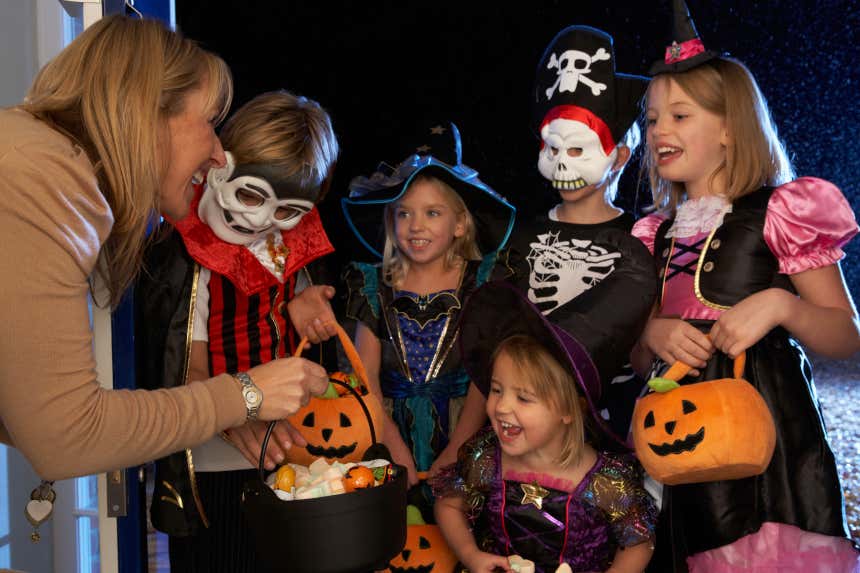
Trick or treat?
The phrase ‘trick or treat’ has become absolutely synonymous with Halloween. In movies and TV shows, you’ll often see children dressing up on Halloween night and going from door to door repeating ‘trick or treat?’ to everyone who answers the door.
Going from house to house looking for food originated in Scotland and Ireland (referred to as ‘guising’ or ‘souling’), though the phrase is one of North America’s many contributions to this holiday, first recorded in the 1920s in Canada. The idea behind the phrase is that the person answering the door can either provide a treat or become subject to a playful ‘trick’ or a prank. This eventually made its way back to the UK and Ireland.
Many traditions have changed over time. For example, the Jack-o’-lantern, which is now usually made with a pumpkin, in Ireland was usually made with a turnip. The African-American population also brought their own beliefs and traditions, including voodoo and witchcraft. If you’re in Louisiana, you can learn more about these traditions and the role of voodoo and witchcraft on this New Orleans Mystery & Legends Tour with Civitatis!
5. Is Día de Muertos (Day of the Dead) in Mexico Related to Halloween?
Despite Halloween’s cultural prominence in much of the Western world, this tradition hasn’t gone completely worldwide. Some draw the connection between Mexico’s Día de Muertos (Day of the Dead) and Halloween and even call it ‘Mexican Halloween’. However, while the two holidays may share some similar practices, ultimately, they’re completely different holidays.
Like Halloween, the origins of Día de Muertos are somewhat contested, and views differ as to whether the tradition has pre-Hispanic or European roots. Many Mexican scholars suggest that the celebration derives principally from a Spanish tradition and that the influence of indigenous traditions and iconography came more recently, in the 20th century.
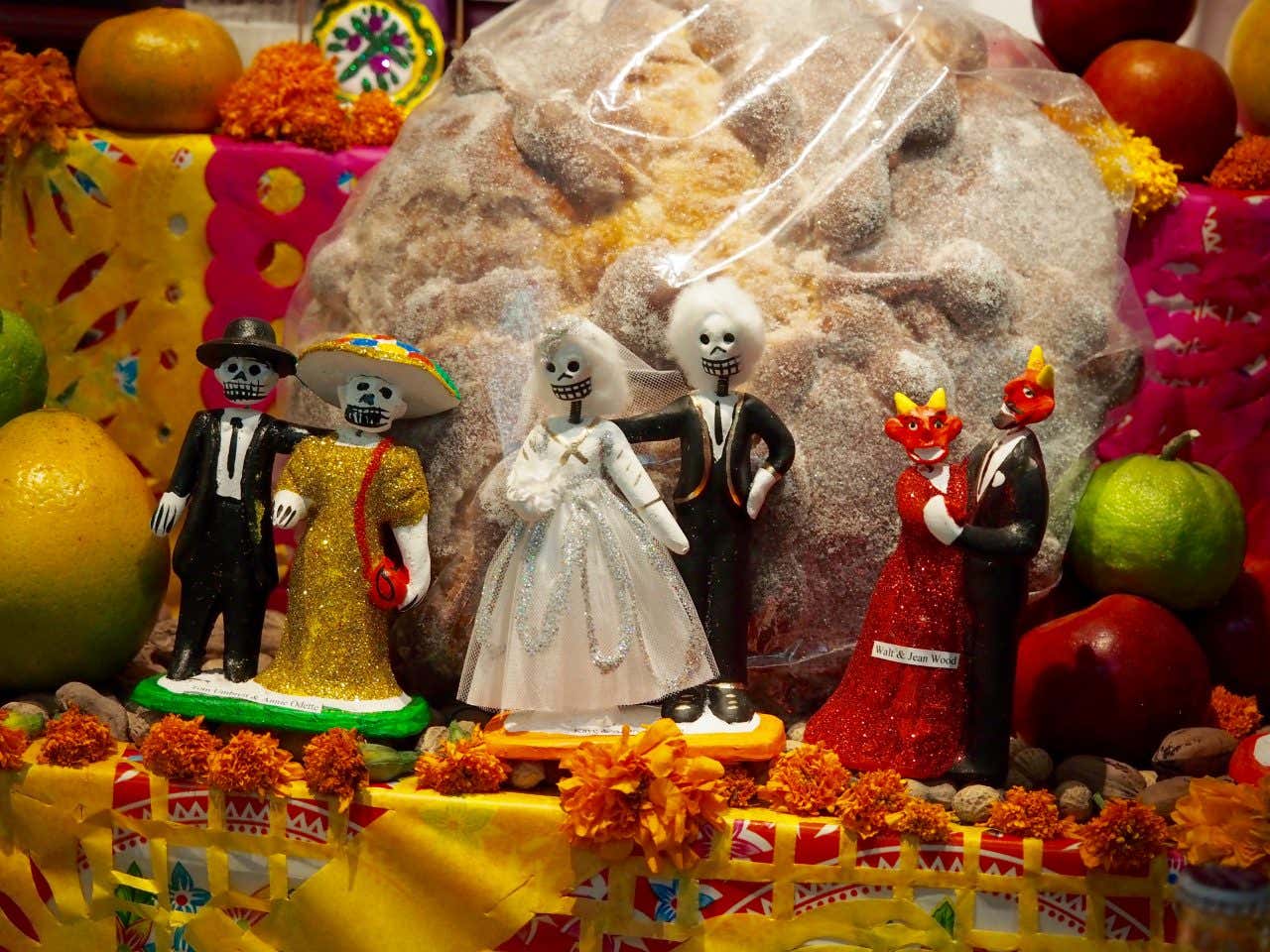
The holiday is celebrated on November 1st and 2nd. At this time of year, Mexican people often visit cemeteries and build colorful altars (ofrendas) adorned with photos, candles, flowers, and the favorite foods of the departed. Unlike Halloween, Dia de Muertos is a celebratory tradition. During these days, people sing songs and share stories, as is beautifully reflected in the film Coco.
Visiting Mexico (especially Oaxaca and Mexico City) at this time of year is well worth it. Check out entry number 4 on our list of the best places to travel in November to learn more about how to experience the festivities for yourself!
The history of Halloween involves a combination of various cultures and it continues to evolve today! How do you celebrate Halloween? Travelling during Halloween is a great way to learn about other cultures. Thinking of travelling during spooky season? Be sure to check out tours and experiences with Civitatis to make the most of your trip!






